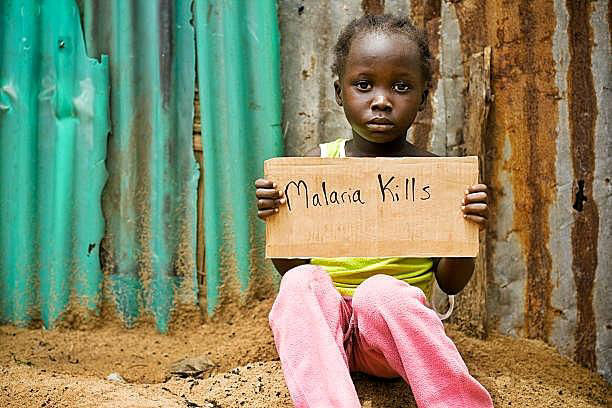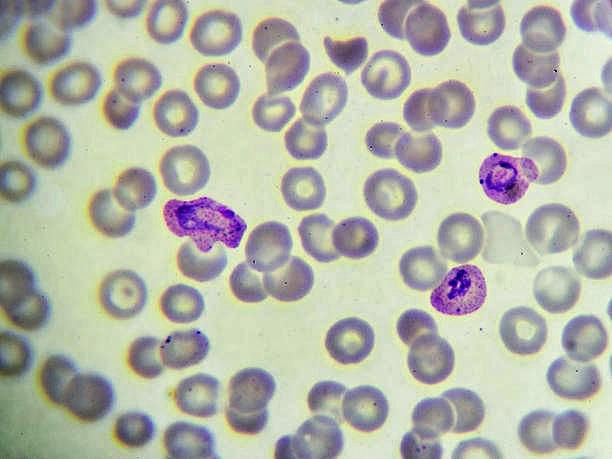A Donor Bill of Rights


Source: iStock Photos. https://bit.ly/3rlbaRJ.
What is Malaria?
Malaria is a serious disease caused by parasites that are transmitted to people through the bites of infected mosquitoes. The disease is mostly common in tropical regions like Africa, but may also occur in some temperate regions, and it is generally regarded as a disease of poverty and underdevelopment. Despite various control efforts, malaria has been the greatest single killer disease throughout human history, and continues to be a major infectious disease of public concern. Malaria kills about 1 million people annually on a global scale, and from statistical figures, WHO estimates that every 30 seconds, a child dies of malaria. On average, the disease has a mortality rate of about 15-20%, but in very severe cases, this can rise to about 40-50%.

Source: iStock Photos. https://bit.ly/3rlbaRJ.
What causes Malaria?
The disease is caused by certain parasites that are transmitted through the bite of an infected female anopheles mosquito, although blood-borne transmission (sharing of blood products and blood transfusion) or congenital transmission may occur in rare cases. Transmission of malaria is more intense in areas with high temperatures, humidity, regular rainfall and a prevalence of mosquitoes. There are about 20 different species of anopheles mosquitoes worldwide, each with its own breeding preference, though most of them breed in stagnant water and bushy areas, and most commonly bite at night.
During a blood meal, the infected anopheles mosquito transmits the parasite Plasmodium spp, which is the organism that causes malaria. There are 4 main species of the parasite that infects humans: Plasmodium falciparum, Plasmodium vivax, Plasmodium ovae and Plasmodium malariae. Once the parasites get into the body through the mosquito bite, they invade the liver and bloodstream of the infected person, causing extensive damage to the liver cells and red blood cells. There are certain peculiarities of each plasmodium specie:
● P. falciparum is the most dangerous specie and is the cause of almost all malaria-associated deaths worldwide.
● This is followed by P. vivax, which is the next most dangerous.
● P. falciparum and P. vivax together account for almost 90% of all malaria infections globally.
● The malaria caused by P. ovale and P. malariae is usually not life-threatening, except in extreme circumstances.
● In recent years, another species known as ‘Plasmodium knowlesi’ was discovered. Although it usually causes malaria in monkeys in certain areas of South-East Asia, it has also been observed to cause malaria in humans.
What are the signs and symptoms of Malaria?
The common signs and symptoms of malaria are mainly as a result of the body’s ‘inflammatory response’, which is a mechanism it uses to fight off the parasites. Also, the effects of the damage the parasite causes to red blood cells and the liver contributes to the overall illness experienced. On average, the symptoms begin to appear at about 12 days after infection, but on certain occasions, may take up to 6 months before showing. In people who have some form of innate/acquired immunity to malaria, the infection may be ‘asymptomatic’ (no symptoms), while those with low immunity to the disease may suffer a more severe acute illness.
The first symptoms of malaria are nonspecific and similar to ‘the flu’. They include cold and chills, fever, headaches, loss of appetite, malaise feeling, nausea and vomiting. If the symptoms begin to regress, sweating may occur as the body temperature returns to normal. In severe cases, advanced signs and symptoms could be observed, such as fast breathing, splenomegaly (enlarged spleen), hepatomegaly (enlarged liver), convulsions, impaired consciousness or coma, jaundice, myalgia (muscle weakness) and haemoglobinuria (presence of haemoglobin in the urine). Note that severe malaria occurs mostly with P. falciparum and usually occurs due to delays in seeking medical attention.
How can Malaria be diagnosed?
Malaria cannot be diagnosed based on symptoms alone, thus, it requires standard laboratory tests for confirmation. The gold standard for diagnosing malaria is the microscopic examination of thick and thin ‘blood films’ by an expert laboratory professional to identify the malaria parasites. Some other diagnostic methods have also been developed to detect the disease more quickly and accurately, like rapid diagnostic tests (RDTs) and polymerase chain reaction (PCR) methods, though these are less commonly used. Prompt diagnosis and treatment is crucial to prevent the disease from getting more severe and causing death.
How can Malaria be treated?
Malaria is treated with prescribed drugs to kill the parasite. The type of drug used depends on the type of malaria parasite, the severity of symptoms, the individual’s age, and if the person is pregnant or not. The most common antimalarial treatment is the ‘Artemisinin-based Combination Therapies’ (ACTs), which consist of a combination of two or more drugs that work effectively against the parasite in different ways. Examples of ACTs include:
- Artemether-Lumefantrine (Coartem)
- Artesunate-Amodiaquine (Armatem)
- Atovaquone-Proguanil (Malarone)
Chloroquine phosphate was initially used for malaria treatment, but most malaria parasites are now resistant to it and the drug was known to cause a number of side effects to patients. More antimalarial drugs are also being researched and developed, as there is an evolving prevalence of drug-resistant malaria parasites.

Source: iStock Photos. https://bit.ly/3rlbaRJ
What are the possible complications of Malaria?
Once malaria is confirmed, treatment must commence immediately. If left untreated, a number of complications can occur, such as cerebral malaria, severe anaemia, low blood sugar and organ failure.
- In cerebral malaria, parasite-filled blood cells may block small blood vessels in the brain, causing ischemia (decreased blood supply to an organ), brain swelling and seizures, all of which can cause irreversible brain damage.
- In severe anemia, the parasites cause extensive damage to the red blood cells, making transport of oxygen round the body difficult.
- Malaria parasites usually feed on the glucose in the bloodstream, thus in severe infections, they can cause hypoglycemia (low blood sugar level).
- They can also cause organs like the Liver and Spleen to enlarge and rupture, leading to organ failure, which can be life-threatening.
How best can Malaria be prevented?
The best way to reduce the transmission of malaria at the community level is by employing control measures against the carrier itself (mosquitoes). This is the only intervention that can reduce malaria transmission from very high levels to almost zero. The most effective control measures against mosquitoes is the use of insecticide-treated nets (ITNs) for sleeping, use of indoor insecticide sprays, use of mosquito-repellent creams, as well as clearing of bushes and drainage of stagnant water sources, which serve as breeding habitats for the mosquitoes.
These measures serve to protect people from exposure to mosquito bites, and also help to drastically reduce the mosquito population.
References
World Health Organization (2020). Malaria. https://www.who.int/news-room/fact-sheets/detail/malaria.
Centers for Disease Control and Prevention (2020). About Malaria. https://www.cdc.gov/malaria/about/index.html.
Mayo Clinic (2018). Malaria - Diagnosis and treatment. https://mayocl.in/3h9g0wT.
Develop a free site with Mobirise